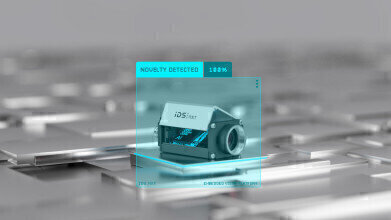Environmental Laboratory
User-friendliness as a basic requirement for AI Vision
Oct 11 2022
When we talk about cameras with AI, it means that we no longer refer to them as merely image providers. As examples, they can now recognise varying objects, generate results themselves or even trigger follow-up processes in connected systems. This opens up completely new application possibilities for machine vision, especially in markets such as smart city, smart farming as well as environment and logistics.
AI-based cameras show their strengths when it comes to recognising strongly varying organic shapes, localising randomly distributed objects in complex images and detecting anomalies that are not or not entirely predictable – and therefore cannot be described in advance applying hard-coded rules. Modern embedded vision systems with artificial intelligence can combine image acquisition, image evaluation and machine control in one device. There is a huge interest in the market for such intelligent embedded solutions, but AI vision is still rarely evaluated and used in comparison.
What could be the reason? In a recent Bitkom survey, every second person interviewed said that they do not use AI in their company because of fear of programming errors and a lack of controllability of AI systems. IDS Imaging Development Systems GmbH therefore sees it as their task not only to offer intelligent cameras as such, but also to place great value on user-friendliness and the traceability of AI decisions during the development process. What this means and how users benefit from the upcoming software release could be discovered at this year’s VISION show.
The all-in-one AI system IDS NXT not only consists of programmable cameras, but also offers specially coordinated tools and workflows that support the users. Those who use IDS NXT can realise their own AI vision applications quickly and with little prior knowledge of camera programming and Deep Learning. From the next free IDS NXT update, customers will be able to use the cameras to detect anomalies in addition to Object Detection and Classification. Only few training data are required to reliably identify both known and unknown deviations. Since only a small number of training images are required to use the new AI method, the entry into AI-based image processing will become even easier.
All things considered, image processing with AI not only opens up new application scenarios and makes creating a flexible machine vision application easier, but is also well suited for rapid prototyping and can thus accelerate development cycles. Consequently, artificial intelligence offers enormous added value for the automation and monitoring of processes – and in the long term, most companies will have to look into it. In the short term, however, it is important to build up trust in the technology and at the same time realistic expectations. User- friendly systems such as IDS NXT pave the way to be adopted on a broad scale.
Digital Edition
AET 28.2 April/May 2024
May 2024
Business News - Teledyne Marine expands with the acquisition of Valeport - Signal partners with gas analysis experts in Korea Air Monitoring - Continuous Fine Particulate Emission Monitor...
View all digital editions
Events
Jul 30 2024 Jakarta, Indonesia
China Energy Summit & Exhibition
Jul 31 2024 Beijing, China
2024 Beijing International Coal & Mining Exhibition
Aug 07 2024 Beijing, China
IWA World Water Congress & Exhibition
Aug 11 2024 Toronto, Canada
Aug 25 2024 Stockholm, Sweden and online









.jpg)








